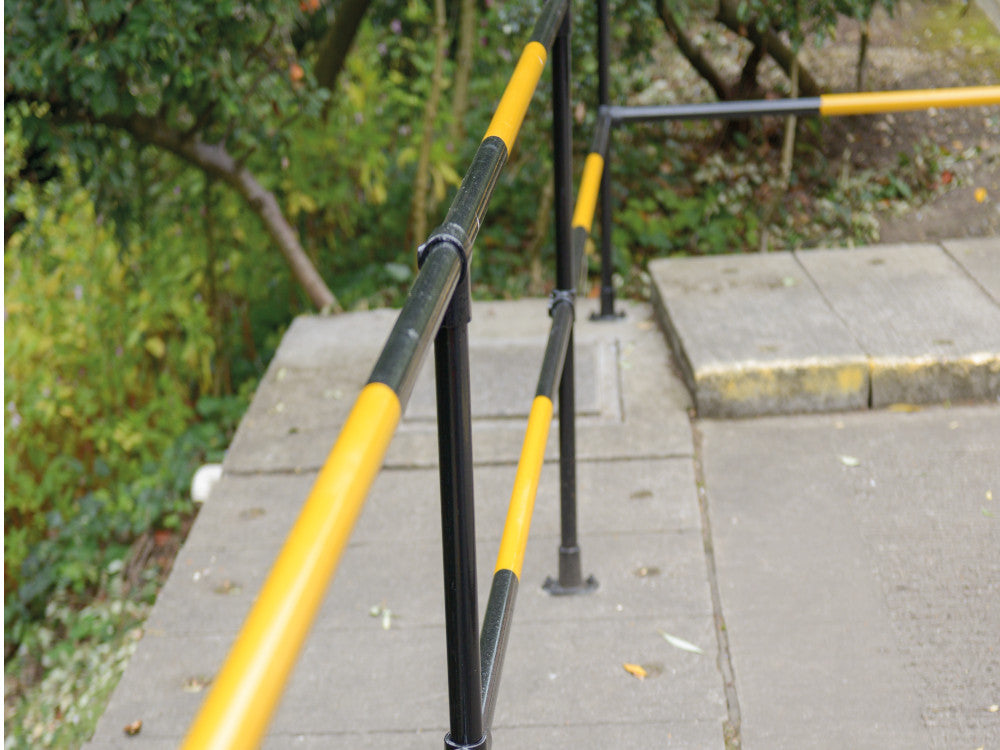When you invest in steel railings, gates or balconies, the finish you choose determines how well they stand up to weather, wear and time. Two of the most common protective finishes are powder coating and hot-dip galvanising. Both processes create a weather‑resistant barrier that keeps steel looking good and reduces maintenance, but they work in very different ways and offer distinct advantages. Here’s what you need to know before you order your next project from DC Iron.
Understanding Powder Coating
Powder coating involves spraying a dry, electrically charged powder onto a thoroughly cleaned metal surface and then baking it in an oven so the particles fuse into a continuous ‘skin’.
This process forms a protective layer thicker than traditional paint and prevents runs or drips. Because the powder carries an electrical charge, it’s drawn evenly to every surface. Nearly any metal can be powder‑coated, and the range of colours and textures is almost unlimited.
Powder‑coat powders contain no solvents or volatile organic compounds (VOCs), making the process environmentally friendly. However, powder‑coated surfaces can degrade if scratched through to the metal beneath, allowing moisture to creep under the coating, and ultraviolet light eventually fades colours. On average a high‑quality powder coat can last 15–20 years.
Shop our range of powder coated tube today.
What Is Hot‑Dip Galvanising?
Galvanising immerses iron or steel into a bath of molten zinc heated to around 840 °F. The zinc forms a bond with the steel, creating a hard, sacrificial layer: corrosion attacks the zinc rather than the underlying metal. This process is one of the oldest and most durable methods of protecting steel.
Its biggest advantage is longevity, a galvanised finish typically outlasts powder coating because scratches do not breach the protection (the surrounding zinc corrodes first). The downside is appearance: freshly galvanised steel has a shiny, spangled silver look that fades to matte grey over time, and you cannot choose alternate colours.
Browse our wide range of galvanised steel tube.

Which One is Best for Your Project?
Durability & Maintenance
Both finishes guard against corrosion for many years, but galvanising has the edge in harsh environments such as coastal regions, farms or industrial sites. Powder‑coating provides excellent protection in less aggressive settings, but if the coating is pierced, the metal can rust underneath.
Galvanised steel, by contrast, remains protected even if the surface is scratched.
That doesn’t mean powder‑coated products are fragile, most powder‑coat failures stem from inadequate surface preparation.
Appearance & Customisation
Aesthetics may be the deciding factor for many homeowners.
Powder‑coating offers virtually limitless colours and textures, allowing you to match your balcony railing to window frames, cladding or garden furniture. Metallic and textured powders can mimic bronze, copper or iron finishes without the maintenance. Galvanised finishes come in one colour: silver that slowly weathers to grey.
You can paint over galvanised steel, but adherence and longevity depend on correct preparation, and the paint will need to be refreshed periodically.
Environmental Considerations
Powder‑coating has a relatively low environmental impact: it uses no solvents and generates very little waste.
The curing temperature (around 400°F) is moderate compared with galvanising, and overspray can be reclaimed. Hot‑dip galvanising is more energy‑intensive and involves cleaning the metal in hydrochloric acid and fluxing agents.
However, the coating can last up to five times longer than powder‑coating, and both the steel and zinc are fully recyclable, giving galvanised products a strong sustainability argument over the product’s life.
Cost Considerations
Initial cost is another factor. Hot‑dip galvanising is generally more expensive than powder‑coating due to the price of zinc, higher process temperatures and the need for specialised equipment.
Powder‑coating tends to be cheaper up front, but if it needs repainting sooner, the long‑term cost can be higher. The best value depends on the application: for high‑wear or corrosive environments, galvanising often pays off in the long run, whereas for decorative projects or interior railings, powder‑coating can be more economical.

Which Finish Is Right for You?
Outdoor structures exposed to harsh weather such as gates, balcony railings and fencing in coastal or industrial settings, galvanising provides sacrificial protection that stands up to salt, chemicals and abrasion.
Decorative or interior metalwork powder coating offers a sleek, tailored appearance in almost any colour. It’s ideal for balcony handrails, stair balustrades and garden features where aesthetics are paramount.
Combining both; a duplex system applies powder coating over galvanised steel, marrying the longevity of zinc with the colour options of powder. This is perfect for high‑end projects that require both durability and design flexibility.
How DC Iron Can Help
At DC Iron we supply an extensive range of powder‑coated and galvanised products. Our balcony railings, Juliet balconies, gates and fencing components are available with either finish, and we can advise you on the best option for your project.
Whether you’re looking for a vibrant powder‑coated handrail to match modern cladding or a galvanised gate that will shrug off decades of weather, our specialists will ensure you receive the right product.
Shop powder coated tube or galvanised steel tube at DC Iron today!

